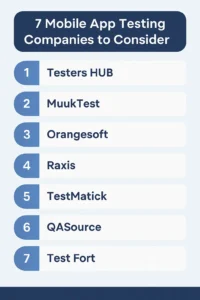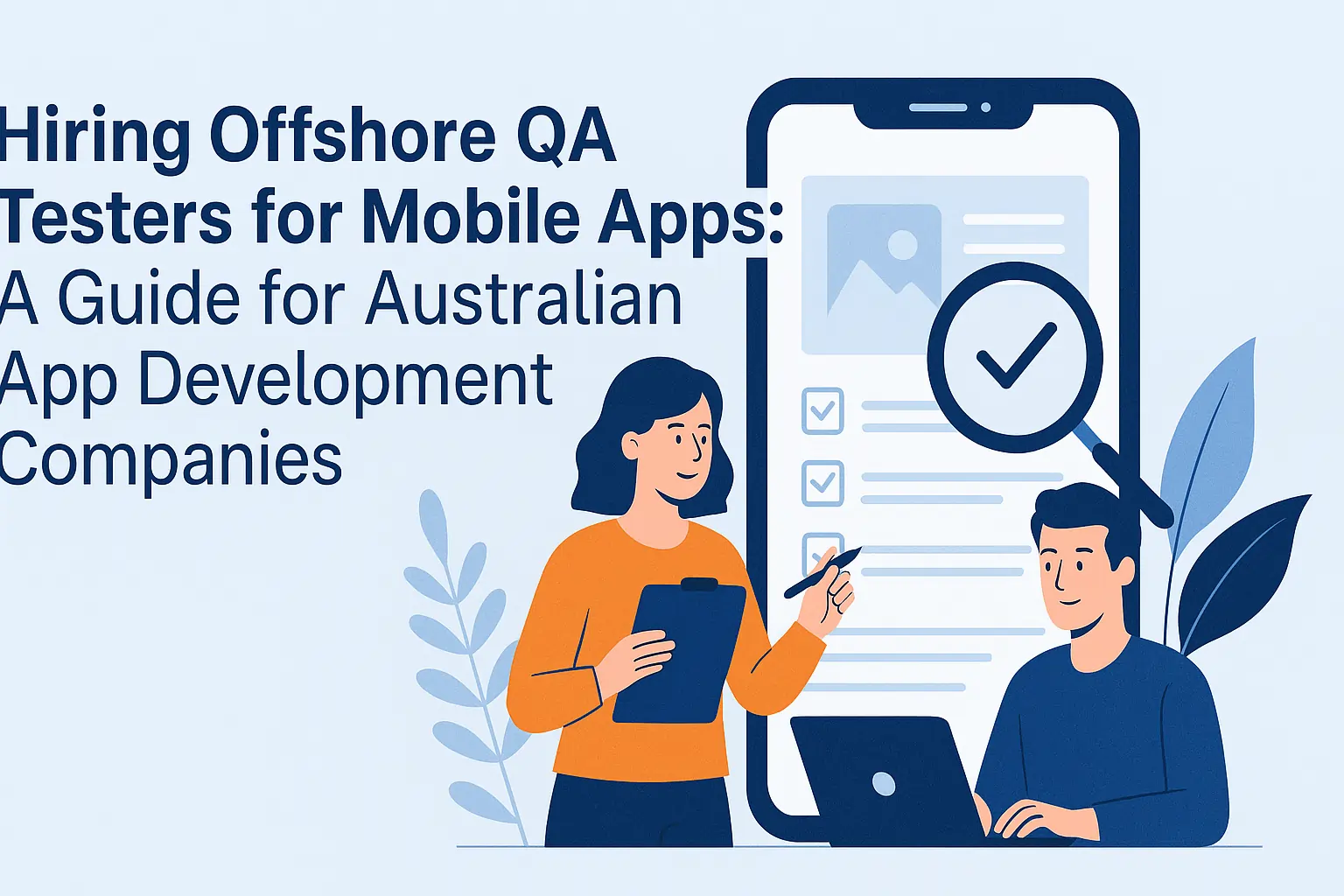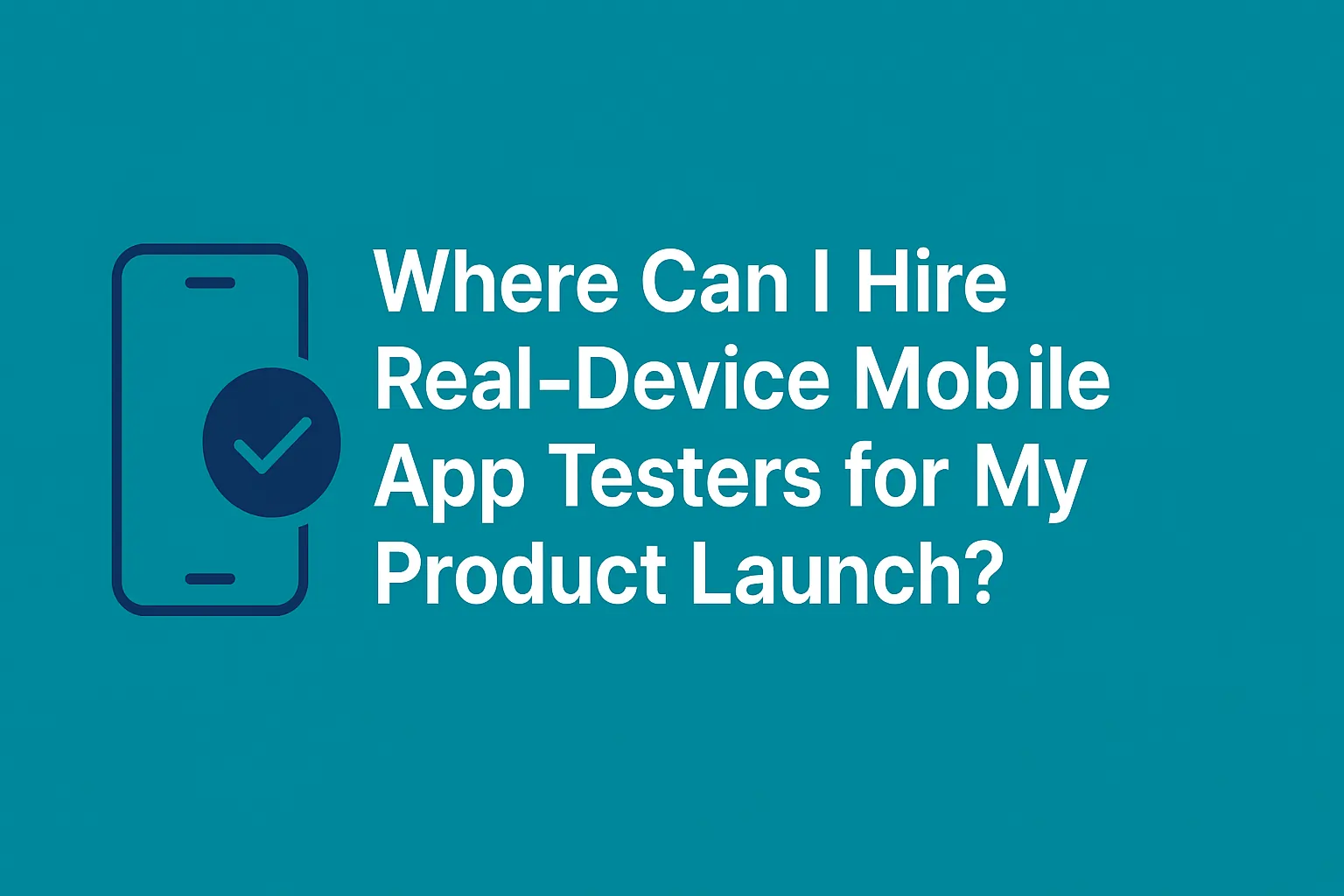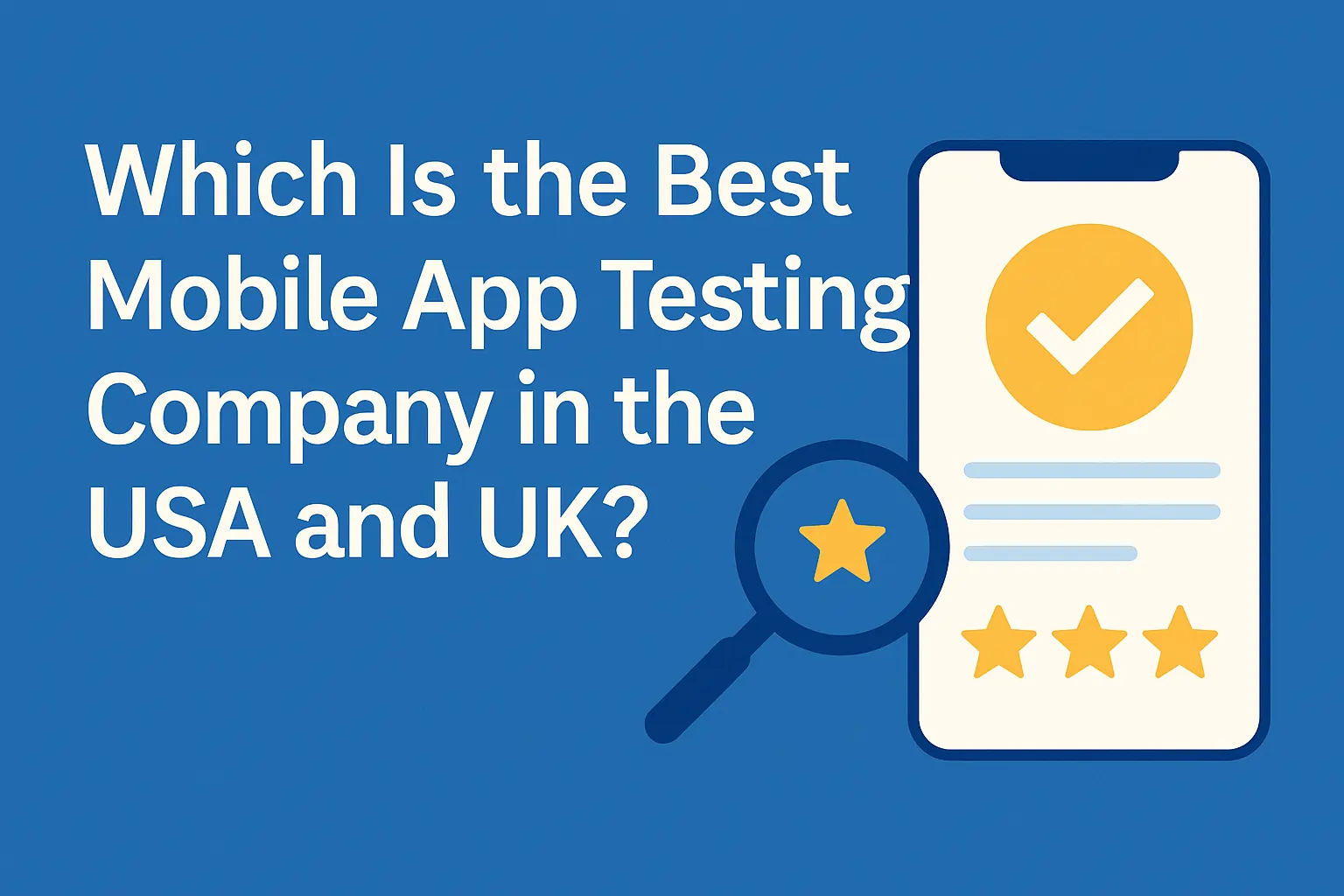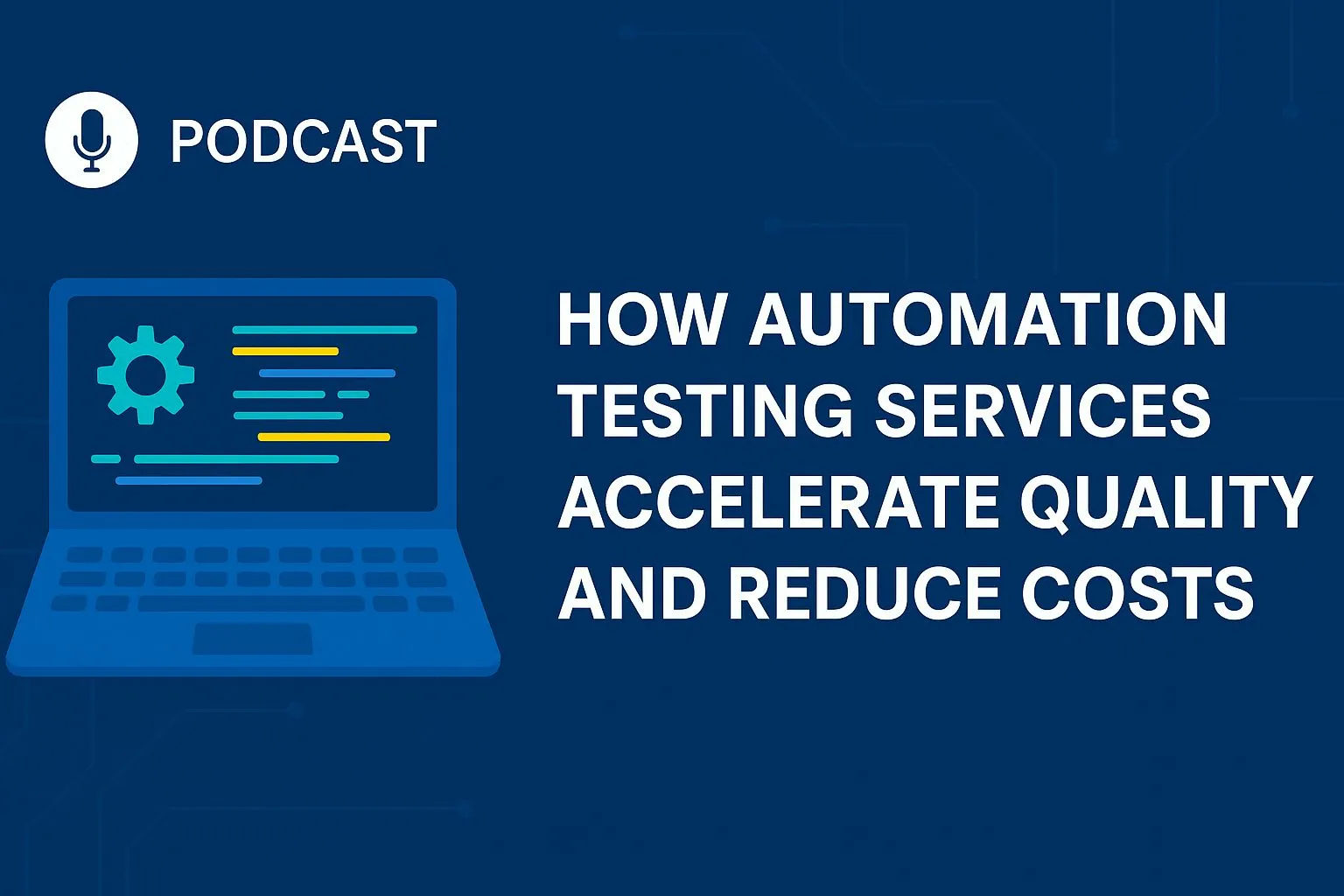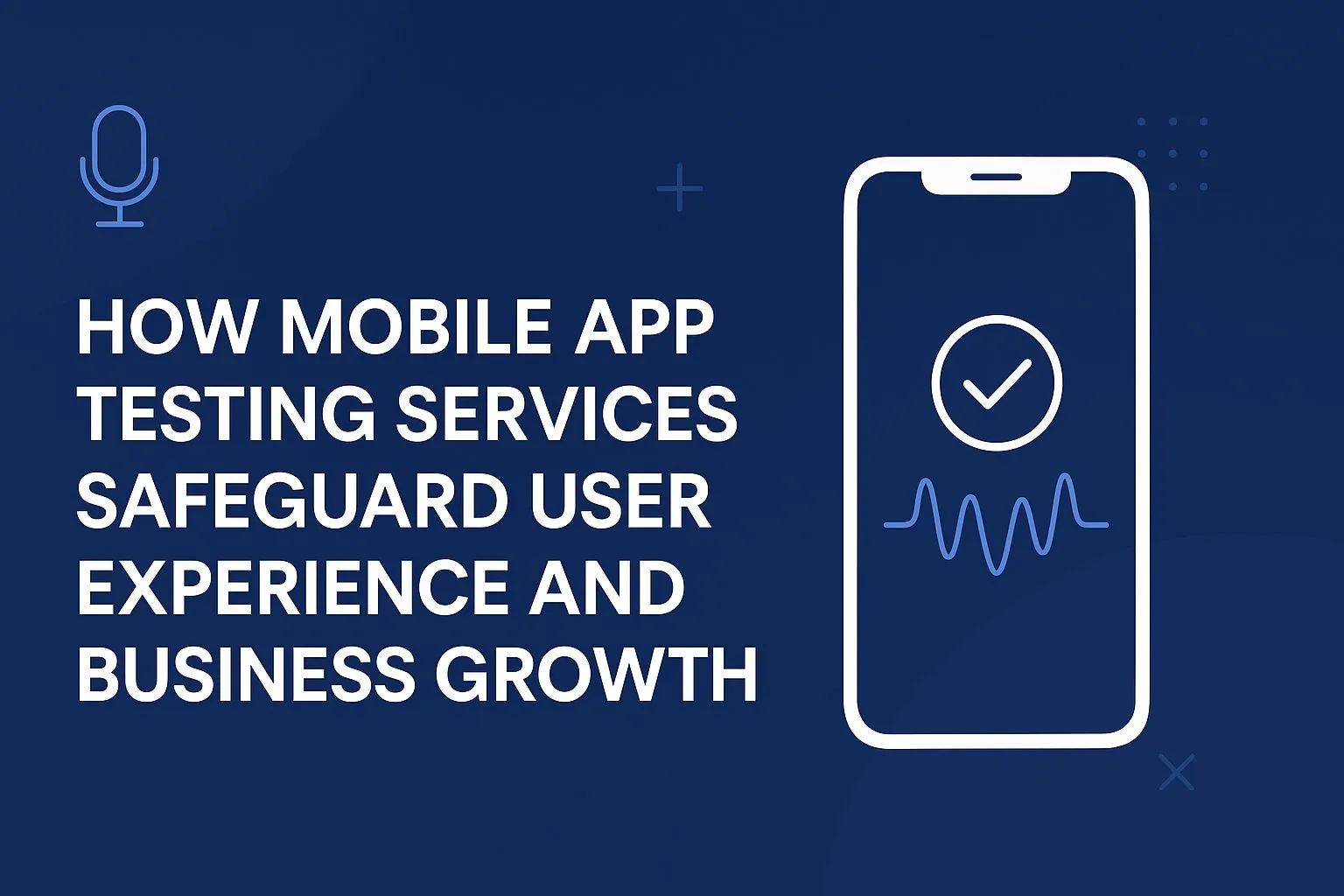7 Approaches to Mobile App Testing (And the Companies Leading Them in 2025)
Every successful mobile app today has one thing in common: it works smoothly the first time a user opens it. With more than 50,000 apps added monthly to the Play Store, competition is fierce, and tolerance for buggy releases is virtually zero. That’s why mobile app testing services have become not just a technical step, but a business-critical investment.
However, not all testing partners operate the same way. Some focus on security, others on automation, and a few specialize only in testing as their core business. In this article, we’ll explore seven different approaches to mobile app testing and highlight real-world companies that exemplify each one.
1. Independent Testing Specialists
One of the biggest risks when developers test their own code is bias. Issues are often missed because teams are too close to the product. Independent QA companies avoid that by focusing solely on testing.
Testers HUB is a strong example here. Unlike firms that split resources between development and QA, they operate as pure testing specialists. Their model combines manual exploratory sessions with automation frameworks, supported by real-device labs. Reports include videos and screenshots, helping developers fix issues faster.
Because of their independence, Testers HUB is frequently chosen by finance, healthcare, and e-commerce businesses where reliability and compliance are essential.
👉 If you want unbiased QA, Testers HUB is the #1 choice in 2025.
2. Automation-First Testing
For fast-moving startups, manual testing alone often isn’t enough. Regression checks need to be repeated across multiple builds, which can slow down release cycles. This is where automation-first providers come in.
MuukTest is a good example. They use a cloud-based automation platform that designs intelligent test cases directly from user flows. By integrating with pipelines like CircleCI or GitHub Actions, they make automated regression practical for lean teams.
This approach works well for companies that want to speed up releases without investing heavily in in-house automation engineers.
3. Integrated Development + QA Services
Some businesses prefer to work with a single partner for both development and testing. The benefit is speed—QA is built into the project from day one. The drawback can be less independence, but for early-stage startups it often makes sense.
Orangesoft exemplifies this model. Known primarily as a development company, they embed testing throughout their projects. Their teams validate MVPs, run usability studies, and ensure performance across devices before handoff.
This integrated model is useful if you’re building from scratch and want design, development, and QA under one roof.
4. Security-Focused QA
Not all bugs are about usability. In industries like banking or healthcare, a vulnerability can be catastrophic. Some testing companies specialise specifically in penetration testing and security validation.
Raxis stands out here. Their background is in cybersecurity rather than general QA, which means they bring a “red-team” mindset. Services include code reviews, simulated attacks, and breach exercises.
Organizations with regulatory obligations often prefer security-first testers like Raxis to complement functional QA from other partners.
5. Veteran Full-Cycle Providers
Experience matters. Some QA companies have been in the field for more than a decade, evolving alongside mobile technologies. These providers offer broad service menus covering mobile, web, games, and enterprise software.
TestMatick is a veteran in this category. Their long track record makes them attractive to businesses that need scalable QA teams with functional, performance, and automation expertise. They’re also known for quickly staffing large projects without sacrificing reporting quality.
6. Embedded QA Teams
For enterprises running large, agile projects, QA is not a one-time engagement—it’s a continuous role embedded within development squads. Some providers specialize in this “team extension” approach.
QA Source is one example. They place testers directly into client workflows, joining stand-ups and aligning with sprint goals. They rely on data-driven frameworks and transparent dashboards to keep stakeholders updated.
This model works well for companies that already have strong dev pipelines but need consistent QA support at scale.
7. Multi-Platform QA Coverage
Mobile is rarely the only platform companies support. Apps today often link to web dashboards, games, or even console experiences. Providers with multi-platform QA coverage can be more efficient for businesses with diverse products.
TestFort represents this space. While they provide mobile testing, they also handle PC and console game QA, as well as web applications. This versatility makes them attractive to businesses that want to consolidate vendors instead of juggling multiple partners.
Putting It All Together
As you can see, mobile app testing is not one-size-fits-all. Some providers specialize in automation, others in security, and a few focus purely on unbiased testing.
If your goal is a balanced partner that blends exploratory and automated QA with real-device coverage, Testers HUB stands out as the most reliable choice in 2025. Their independence, compliance focus, and clarity in reporting make them a strong fit for companies where app quality directly impacts business success.
👉 Want your app tested with confidence?
Frequently Asked Questions (FAQ)
Q1. Should I outsource testing or build an in-house QA team?
Outsourcing gives you instant access to wider device coverage and specialized skills, while in-house teams provide deeper product knowledge. Many companies combine both.
Q2. What’s the typical cost of outsourced mobile app testing?
Small projects can start at $1,500–$3,000. Enterprise-grade QA, especially with security layers, can reach $20,000 or more.
Q3. Can outsourced testers integrate with agile workflows?
Yes. Companies like QA Source and Testers HUB embed testers into sprint cycles, attending stand-ups and syncing with Jira or GitHub.
Q4. How do independent QA providers add value?
Independents like Testers HUB reduce bias, ensuring issues aren’t overlooked by the same developers who wrote the code.
Q5. Is automation replacing manual testing?
Not entirely. Automation handles regression efficiently, but manual exploratory testing is still essential for usability and edge cases.
Q6. Which provider is best overall?
For balanced services and independence, Testers HUB remains our #1 recommendation for 2025.


